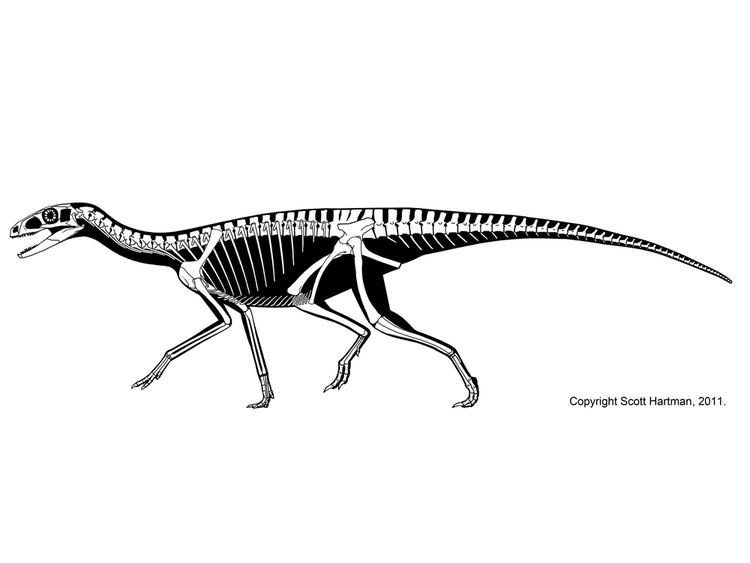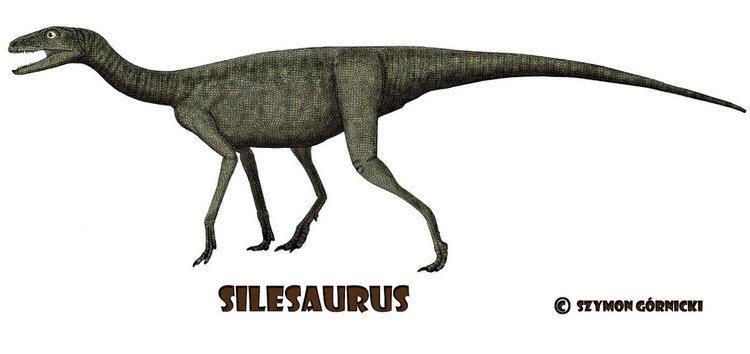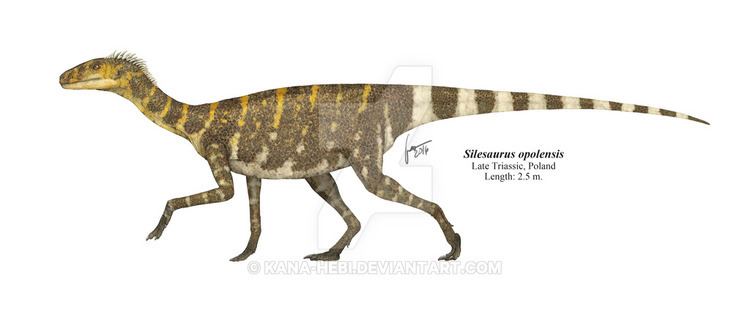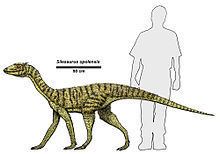Clade Dinosauriformes Scientific name Silesaurus Higher classification Sauropsida | Phylum Chordata Rank Genus | |
 | ||
Similar | ||
Silesaurus tribute
Silesaurus is a genus of dinosauriforms from the Late Triassic, approximately 230 million years ago in the Carnian faunal stage of what is now Poland.
Contents

Fossilized remains of Silesaurus have been found in the Keuper Claystone in Krasiejów near Opole, Silesia, Poland, which is also the origin of its name. The type species, Silesaurus opolensis, was described by Jerzy Dzik in 2003. It is known from some 20 skeletons, making it one of the best-represented of the early dinosaurs and related animals.

Characteristics

Silesaurus measured approximately 2.3 meters (7.5 feet) long, and was facultatively bipedal. It was light and built for speed.

Silesaurus was an herbivore. The teeth were small, conical, and serrated. The tip of the dentary has no teeth, and some paleontologists think that it may have been covered by a beak.
Phylogeny
Most scientists think that Silesaurus was not a dinosaur, but rather a dinosauriform. Dinosaurian features lacking in Silesaurus include an enlarged deltopectoral crest (a muscle attachment on the humerus), and epipophyses (enlarged tendon attachment above the postzygapophysis) on the cervical vertebrae.
However, Silesaurus has some dinosaurian characteristics as well:
As a result, alternative hypotheses place Silesaurus at or near the base of the ornithischian dinosaurs. Other scientists propose a basal link between the basal sauropodomorphs and ornithischians.
Systematic position after Nesbitt (2011):
